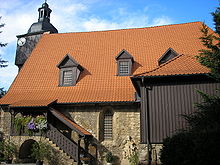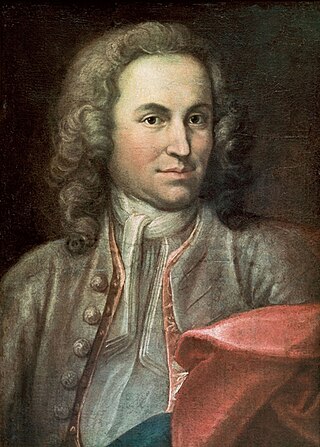
Nach dir, Herr, verlanget mich, BWV 150, is an early church cantata by Johann Sebastian Bach composed for an unknown occasion. It is unique among Bach's cantatas in its sparse orchestration and in the independence and prominence of the chorus, which is featured in four out of seven movements. The text alternates verses from Psalm 25 and poetry by an unknown librettist. Bach scored the work for four vocal parts and a small Baroque instrumental ensemble of two violins, bassoon and basso continuo.

Wir danken dir, Gott, wir danken dir, BWV 29, is a sacred cantata by Johann Sebastian Bach. He composed it in Leipzig in 1731 for Ratswechsel, the annual inauguration of a new town council, and first performed it on 27 August of that year. The cantata was part of a festive service in the Nikolaikirche. The cantata text by an unknown author includes in movement 2 the beginning of Psalm 75, and as the closing chorale the fifth stanza of Johann Gramann's "Nun lob, mein Seel, den Herren". Bach scored the work in eight movements for four vocal parts and a festive Baroque orchestra of three trumpets, timpani, two oboes, strings, an obbligato organ and basso continuo. The organ dominates the first movement Sinfonia which Bach derived from a Partita for violin. The full orchestra accompanies the first choral movement and plays with the voices in the closing chorale, while a sequence of three arias alternating with two recitatives is scored intimately.

Bleib bei uns, denn es will Abend werden, BWV 6, is a cantata by Johann Sebastian Bach for use in a Lutheran service. He composed it in Leipzig in 1725 for Easter Monday and first performed it on 2 April 1725.

Herr Gott, dich loben wir, BWV 16, is a church cantata for New Year's Day by Johann Sebastian Bach. It was first performed on 1 January 1726 in Leipzig, as part of the composer's third cantata cycle. Its libretto is by Georg Christian Lehms, opening with the beginning of "Herr Gott, dich loben wir", Luther's German Te Deum. The cantata's text was completed with a stanza from Paul Eber's "Helft mir Gotts Güte preisen" for the closing chorale.
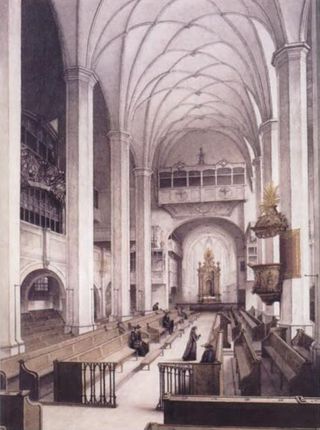
Johann Sebastian Bach composed the church cantata Es ist nichts Gesundes an meinem Leibe, BWV 25 in Leipzig for the 14th Sunday after Trinity and first performed it on 29 August 1723.

Herr, gehe nicht ins Gericht mit deinem Knecht, BWV 105 is a church cantata by Johann Sebastian Bach. He composed it in Leipzig for the ninth Sunday after Trinity and first performed it on 25 July 1723. The musicologist Alfred Dürr has described the cantata as one of "the most sublime descriptions of the soul in baroque and Christian art".

Johann Sebastian Bach composed the church cantata Allein zu dir, Herr Jesu Christ, BWV 33, in Leipzig in 1724 for the thirteenth Sunday after Trinity and first performed it on 3 September 1724. The chorale cantata is based on the hymn "Allein zu dir, Herr Jesu Christ" by Konrad Hubert (1540).
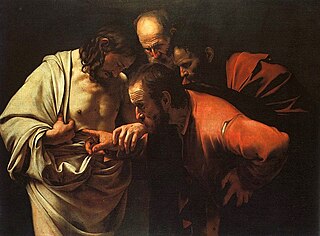
Am Abend aber desselbigen Sabbats, BWV 42, is a church cantata by Johann Sebastian Bach. He composed it in Leipzig for the first Sunday after Easter and first performed it on 8 April 1725.

Gott, man lobet dich in der Stille, BWV 120.1, is a sacred cantata by Johann Sebastian Bach. He composed it in Leipzig for the occasion of Ratswechsel, the inauguration of a new town council in a church service, probably before 1730. Parts of the cantata appeared in a wedding cantata and a cantata commemorating the Augsburg Confession in 1730. Bach reworked the choral second movement for the Symbolum Nicenum of his Mass in B minor.
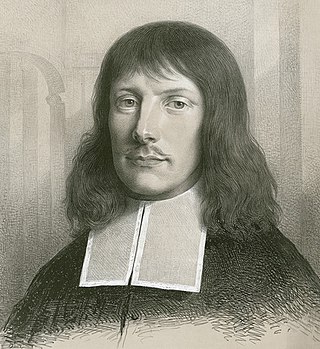
Herr Gott, Beherrscher aller Dinge, BWV 120.2, is a wedding cantata by Johann Sebastian Bach. He composed and first performed it in Leipzig, most likely in 1729.
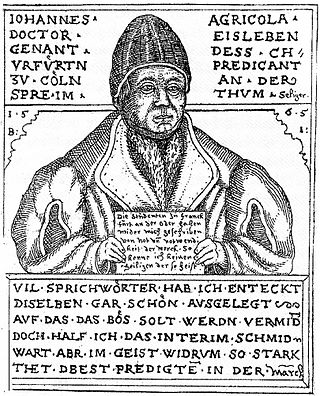
Johann Sebastian Bach composed the church cantata Ich ruf zu dir, Herr Jesu Christ, BWV 177. He wrote the chorale cantata in Leipzig for the fourth Sunday after Trinity and first performed it on 6 July 1732. The cantata text is formed by the unchanged five stanzas of Johann Agricola's hymn.
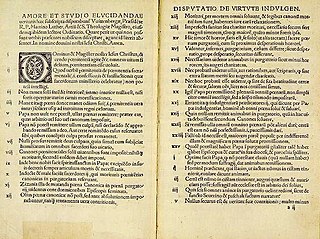
Johann Sebastian Bach composed the church cantata Gott der Herr ist Sonn und Schild, BWV 79, in Leipzig in 1725, his third year as Thomaskantor, for Reformation Day and led the first performance on 31 October 1725.

Johann Sebastian Bach composed the church cantata Herr, deine Augen sehen nach dem Glauben, BWV 102 in Leipzig for the tenth Sunday after Trinity and it was first performed on 25 August 1726.

Lobe den Herrn, meine Seele, BWV 69, also BWV 69.2, is a cantata by Johann Sebastian Bach.

Bringet dem Herrn Ehre seines Namens, BWV 148, is a cantata by Johann Sebastian Bach, a church cantata for the 17th Sunday after Trinity. Bach composed it in Leipzig in 1723 or 1725.

Johann Sebastian Bach composed the church cantata Nimm von uns, Herr, du treuer Gott, BWV 101 in Leipzig for the tenth Sunday after Trinity and first performed it on 13 August 1724. The chorale cantata is based on the hymn by Martin Moller (1584).

Wo Gott der Herr nicht bei uns hält, BWV 178 is a church cantata by Johann Sebastian Bach. He composed it in Leipzig for the eighth Sunday after Trinity and first performed it on 30 July 1724. It is a chorale cantata from his second annual cycle, based on the hymn "Wo Gott der Herr nicht bei uns hält" (1524) by Justus Jonas, a paraphrase of Psalm 124.
Sei Lob und Ehr dem höchsten Gut, BWV 117, is a church cantata by Johann Sebastian Bach. He composed the chorale cantata in Leipzig between 1728 and 1731 for no specific occasion, based on the hymn by Johann Jacob Schütz.
Lobe den Herrn, meine Seele, BWV 143, is an early cantata by Johann Sebastian Bach. He appears to have composed the cantata for New Year's Day, probably when he was in his 20s, but whether it was first performed in Mühlhausen or Weimar is not known: the date of composition is unclear. Bach's authorship has been doubted because the cantata has several unusual features; one of these is the scoring, it is the only Bach cantata to combine three corni da caccia with timpani.

Johann Sebastian Bach started composing cantatas around 1707, when he was still an organist in Arnstadt. The first documented performances of his work took place in Mühlhausen, where he was appointed in 1708.
